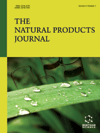
Full text loading...
Turmeric (Curcuma longa L.) is renowned for its therapeutic properties, such as antitumor, antioxidant, anticancer, and antiinflammatory effects. Despite its safety, the usefulness of curcumin, a prominent polyphenolic compound derived from the rhizome of Curcuma longa L., is limited by factors such as low bioavailability, poor absorption, rapid metabolism, and quick systemic elimination. Despite these challenges, researchers continually explore therapeutic potential of curcumin’s through the development of novel delivery systems and chemical modifications such as monocarbonyl analogues of curcumin (MACs) which lack one carbonyl group present in the native structure. Recent studies on MACs have shown promising antiinflammatory, anticancer, and antidiabetic properties. In summary, the development of MACs and other chemical modifications of curcumin presents a promising avenue to improve the bioavailability and pharmacological activities of this natural compound. The objective of this review is to understand structure-activity relationships that will guide further investigations and applications of MACs in therapeutics and help in enhancing curcumin’s bioavailability and pharmacological activities.

Article metrics loading...

Full text loading...
References


Data & Media loading...

